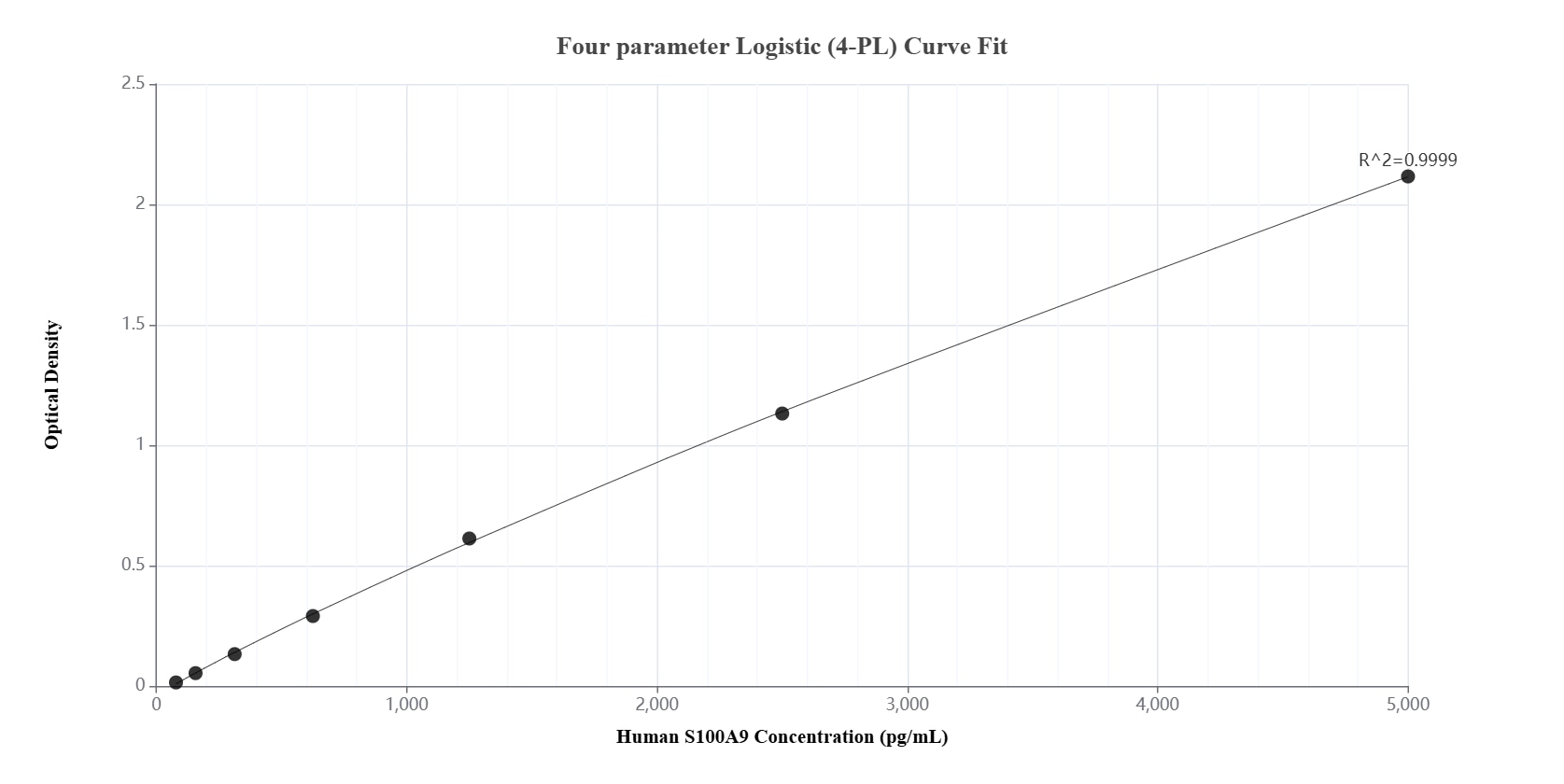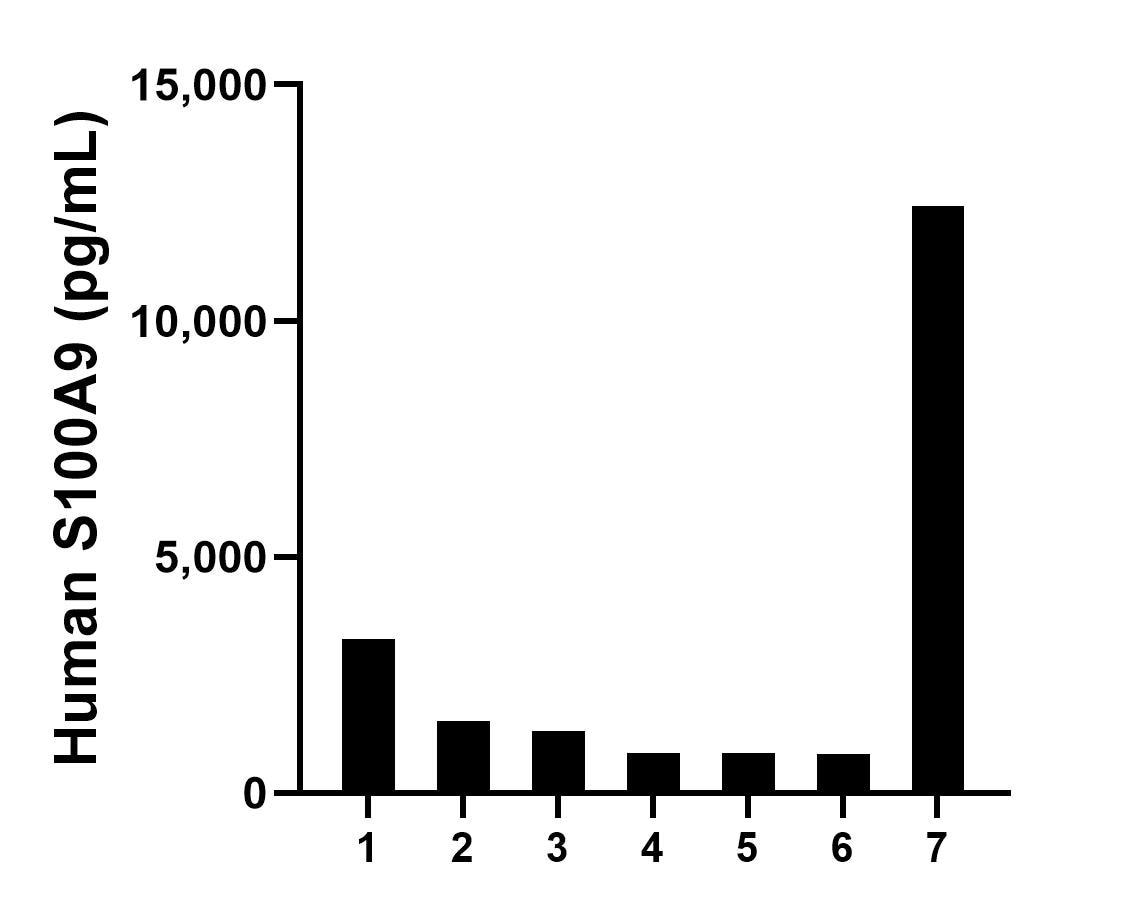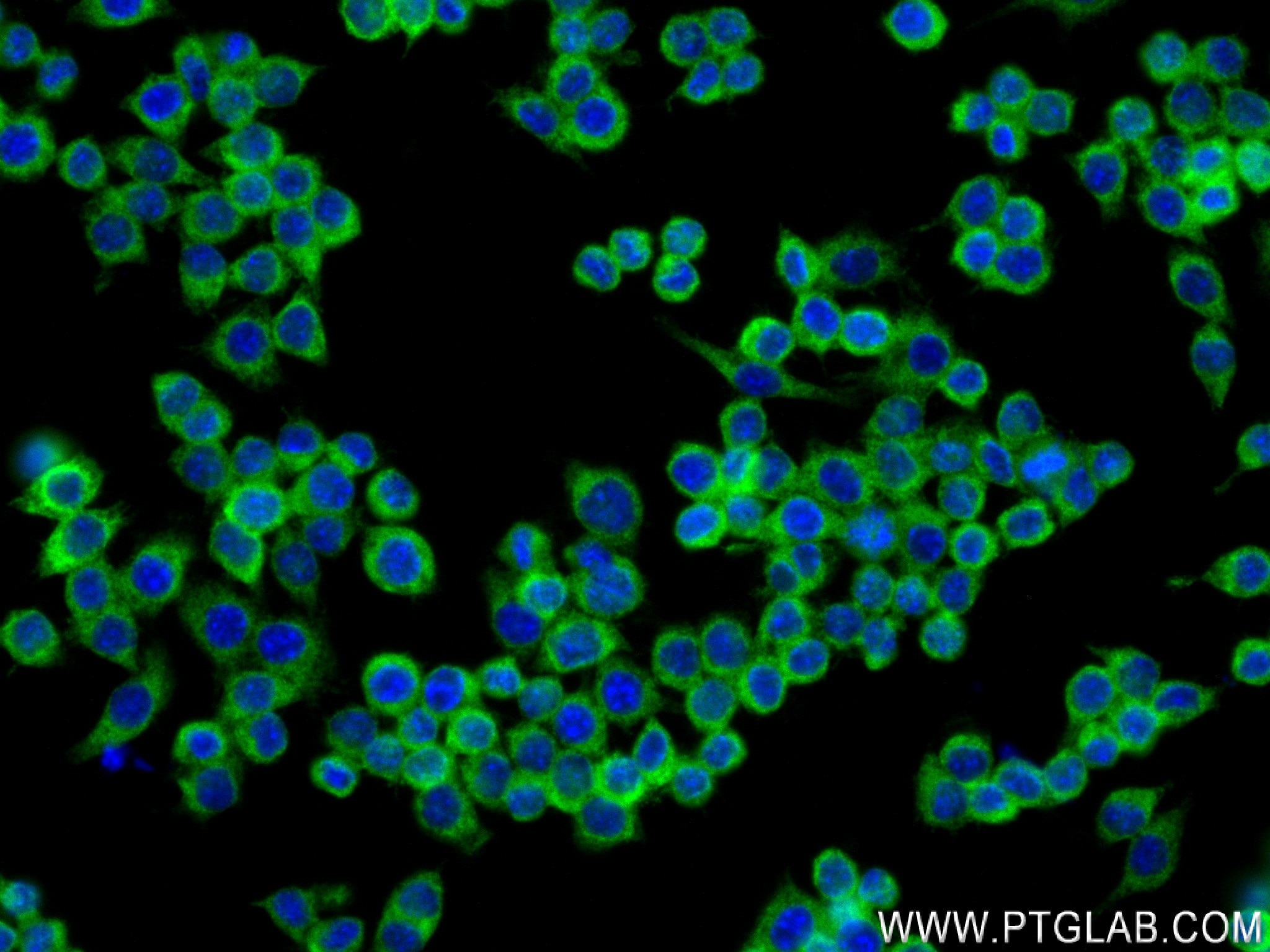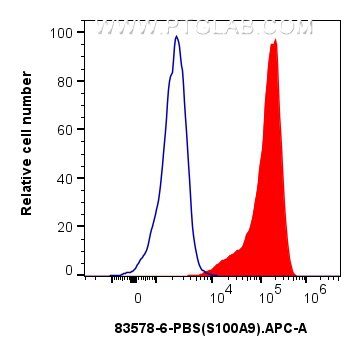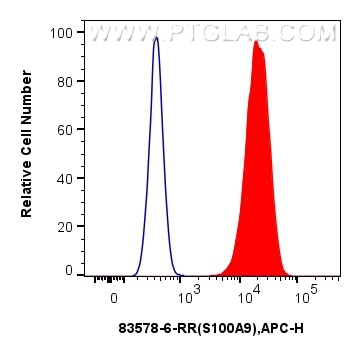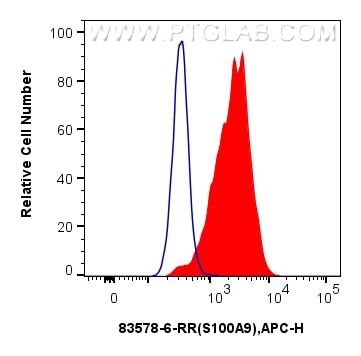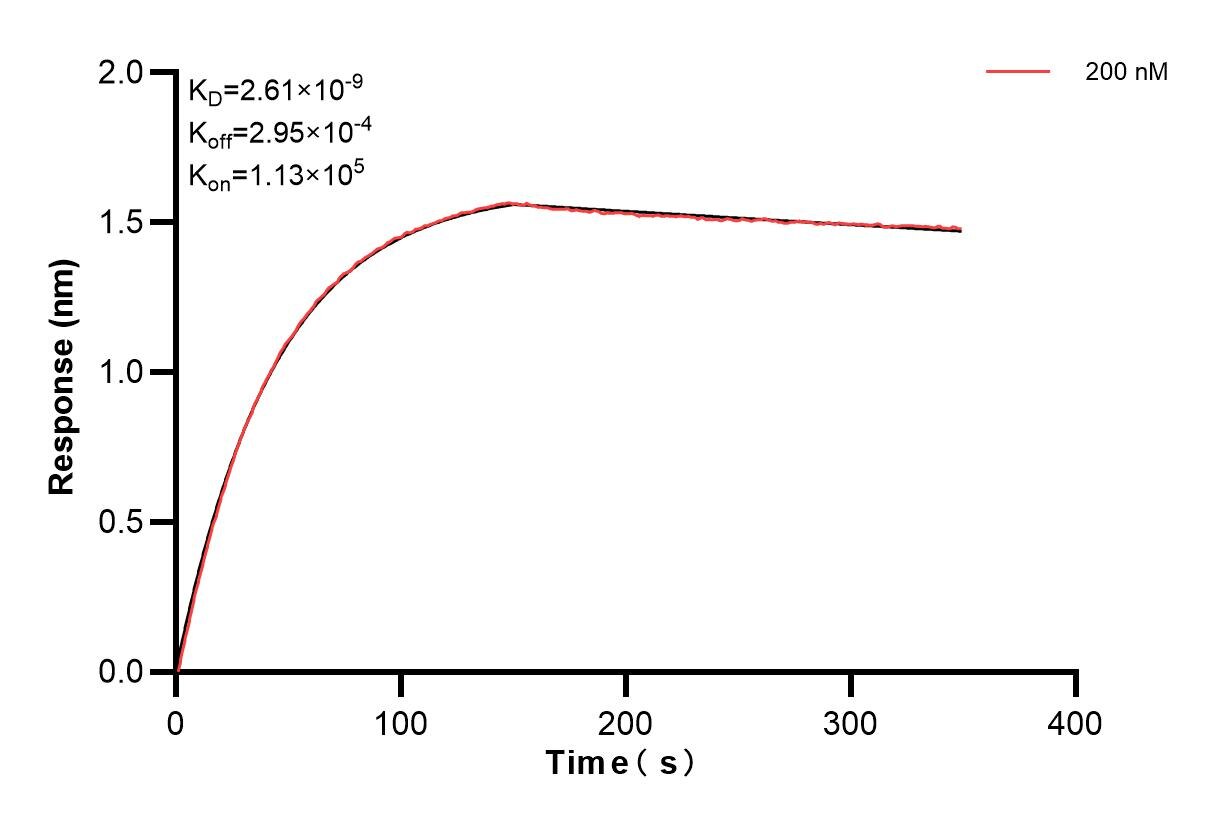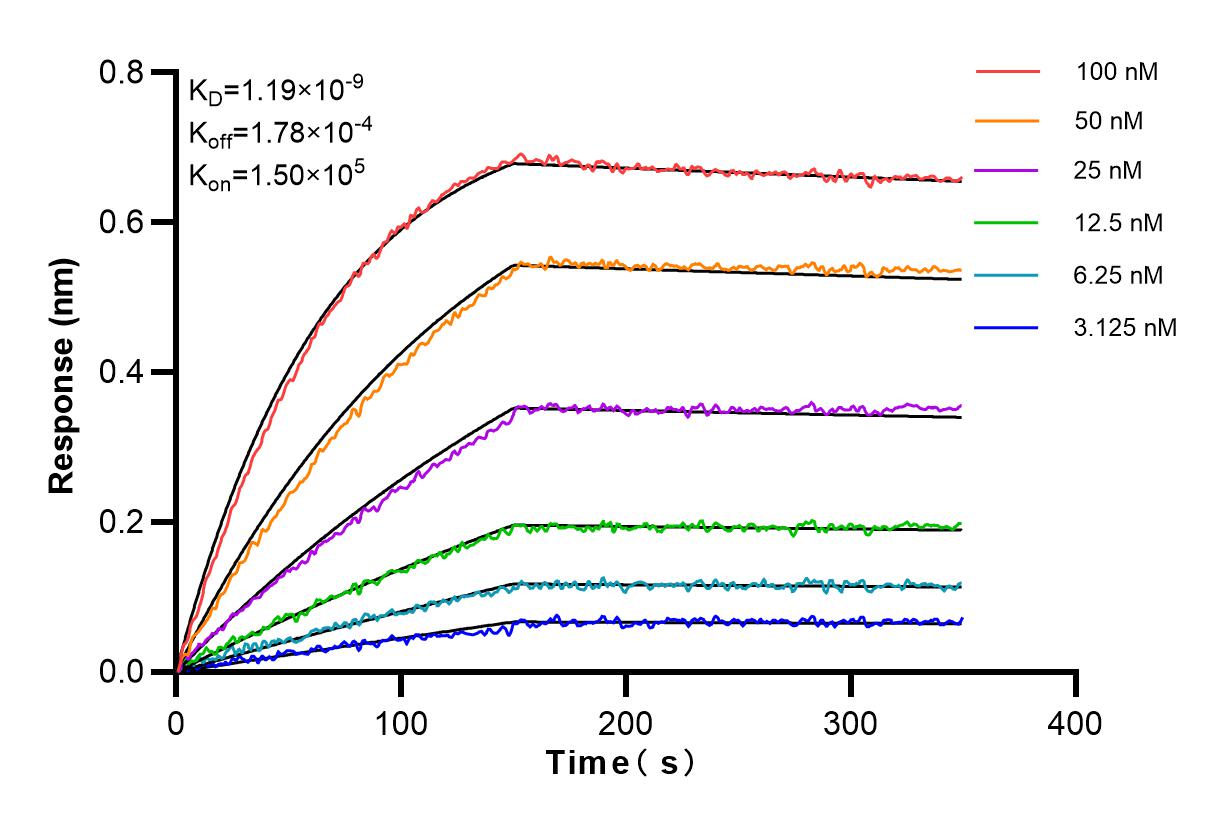Anticorps Recombinant de lapin anti-S100A9
S100A9 Recombinant Antibody for IF/ICC, FC (Intra), Sandwich ELISA, Indirect ELISA, Sample test
Hôte / Isotype
Lapin / IgG
Réactivité testée
Humain
Applications
IF/ICC, FC (Intra), Sandwich ELISA, Indirect ELISA, Sample test
Conjugaison
Non conjugué
CloneNo.
240539F4
N° de cat : 83578-6-PBS
Synonymes
Galerie de données de validation
Applications testées
| Résultats positifs en FC (Intra) | cellules A431, |
Dilution recommandée
| Application | Dilution |
|---|---|
| Flow Cytometry (FC) (INTRA) | FC (INTRA) : 0.25 ug per 10^6 cells in a 100 µl suspension |
| It is recommended that this reagent should be titrated in each testing system to obtain optimal results. | |
| Sample-dependent, check data in validation data gallery | |
Informations sur le produit
83578-6-PBS cible S100A9 dans les applications de IF/ICC, FC (Intra), Sandwich ELISA, Indirect ELISA, Sample test et montre une réactivité avec des échantillons Humain
| Réactivité | Humain |
| Hôte / Isotype | Lapin / IgG |
| Clonalité | Recombinant |
| Type | Anticorps |
| Immunogène | S100A9 Protéine recombinante Ag25764 |
| Nom complet | S100 calcium binding protein A9 |
| Masse moléculaire calculée | 13 kDa |
| Numéro d’acquisition GenBank | BC047681 |
| Symbole du gène | S100A9 |
| Identification du gène (NCBI) | 6280 |
| Conjugaison | Non conjugué |
| Forme | Liquide |
| Méthode de purification | Purification par protéine A |
| Tampon de stockage | PBS only |
| Conditions de stockage | Store at -80°C. 20ul contiennent 0,1% de BSA. |
Informations générales
S100A9 is a calcium binding protein as a member of the S100 family of proteins. S100 proteins are low molecular weight (9 to 14 kDa) intracellular calcium-binding proteins that control key cellular pathways including regulation of the cytoskeleton, cell migration and adhesion, and host oxidative defense. S100A9 may exist as a homodimer, heterodimer (24 kDa) with an S100A8 partner (S100A8/A9), or as a heterotetramer (28 kDa) with an S100A8 partner(S100A8/A9). S100A8 and S100A9 are found intracellularly in granulocytes, monocytes, and early differentiation stages of macrophages.
